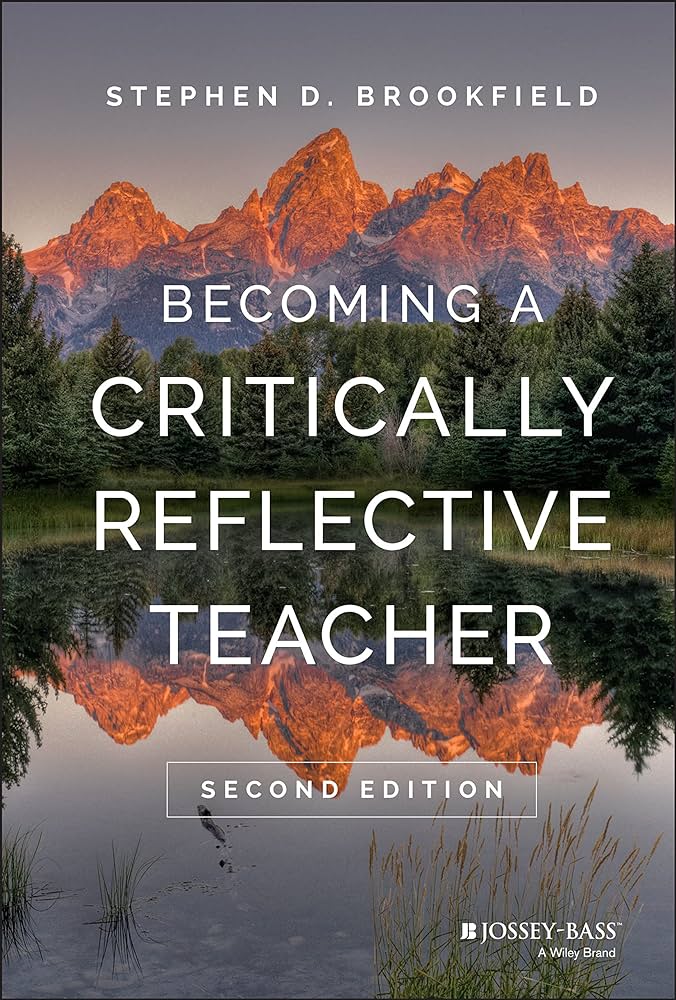Becoming a Critically Reflective Teacher
By Kate Flom Derrick, Assistant Director, Foundations in Learning & Teaching
Stephen Brookfield’s (2019) Becoming a Critically Reflective Teacher is a favorite book at the Searle Center and available through the Menges Library. Brookfield’s book framed the welcome and orientation for graduate students and postdocs in the Reflective & Effective Teaching Program. And to launch the 2023-24 cohort of Searle Fellows, faculty participants and their faculty mentors received a copy of the book.
Brookfield’s encouragement to engage in teaching as an iterative process through which instructors continuously reflect on their teaching practices directly aligns with Searle’s ongoing mission to advance learning for everyone. Brookfield delineates four primary lenses for instructors to apply to their critical self-reflection: their students’ eyes, their peers’ perceptions, their personal experiences, and the theory and research of teaching and learning.
Before he makes the case for examining one’s teaching through these lenses, he begins by outlining the role of power and hegemony in teaching, which I was excited to discuss in detail with the Searle Fellows during a session on “Uncovering Assumptions in Teaching.” In our 90 minutes together, we explored the seven main hegemonic assumptions Brookfield names in the book. We critically examined our own and each other’s teaching statement drafts to identify potential assumptions being made and assessed whether those assumptions were warranted or needed revision. As Brookfield notes, assumptions are the culmination of our lived experiences, cultures, and other influences. They are, in certain situations, valid. They become hegemonic when they serve a larger system–often, the financial interests of the institution–rather than those working within, namely, students and teachers.
By uncovering–and revising when needed–assumptions in our approaches to teaching, we can become more critically reflective instructors, allowing us to better understand how a variety of audiences may view, be impacted by, or understand those approaches. Below are the most identified assumptions from our session at the Searle Fellows Retreat.
Three of Brookfield’s Hegemonic Assumptions of Teaching:
1. “I must motivate students by my charismatic singularity.”
This assumes “if you are a sufficiently charismatic performer, you’ll ignite your students’ enthusiasm for learning. If not, they’ll remain disinterested and apathetic” (42).
2. “Perfect 10 Syndrome”
"Because letting people stick with what comes easy to them is a form of cognitive imprisonment, one could argue that anyone who consistently scores a perfect ten is just as likely to be doing something wrong as something right" (51).
3. “We meet everyone’s needs."
"The meeting needs assumption means that we devote a lot of energy to keeping the customers satisfied. We definitely don't want them to feel confused or angry because we have asked them to do something they find difficult and would rather avoid. But the view simply ignores pedagogic reality” (56).
Do any of these resonate with how you think about and message your own teaching? Are they assumptions you should consider revising or are they valid?
